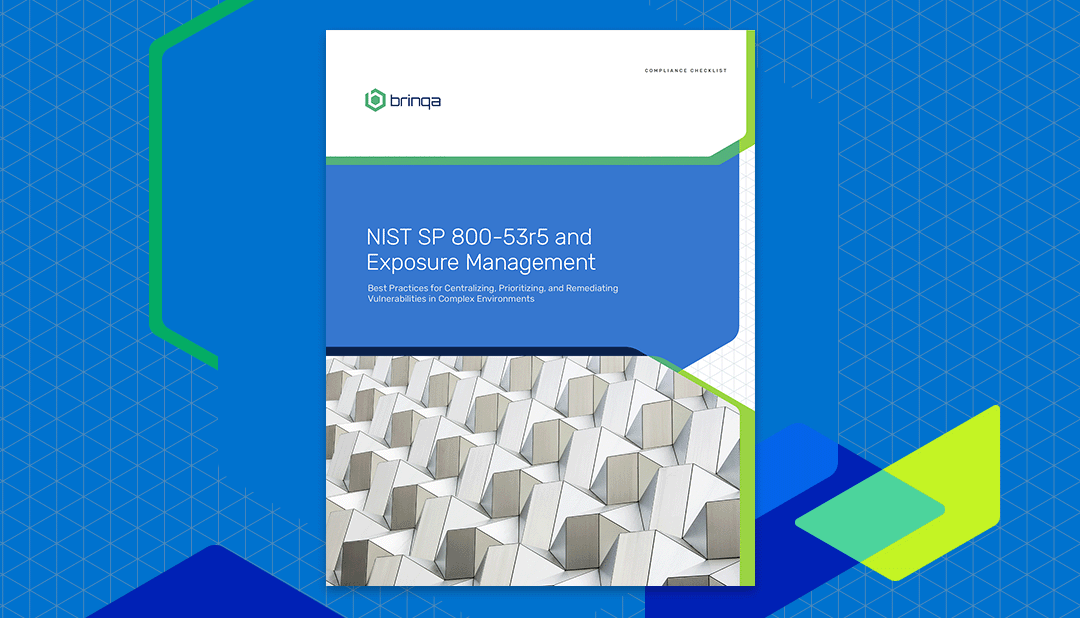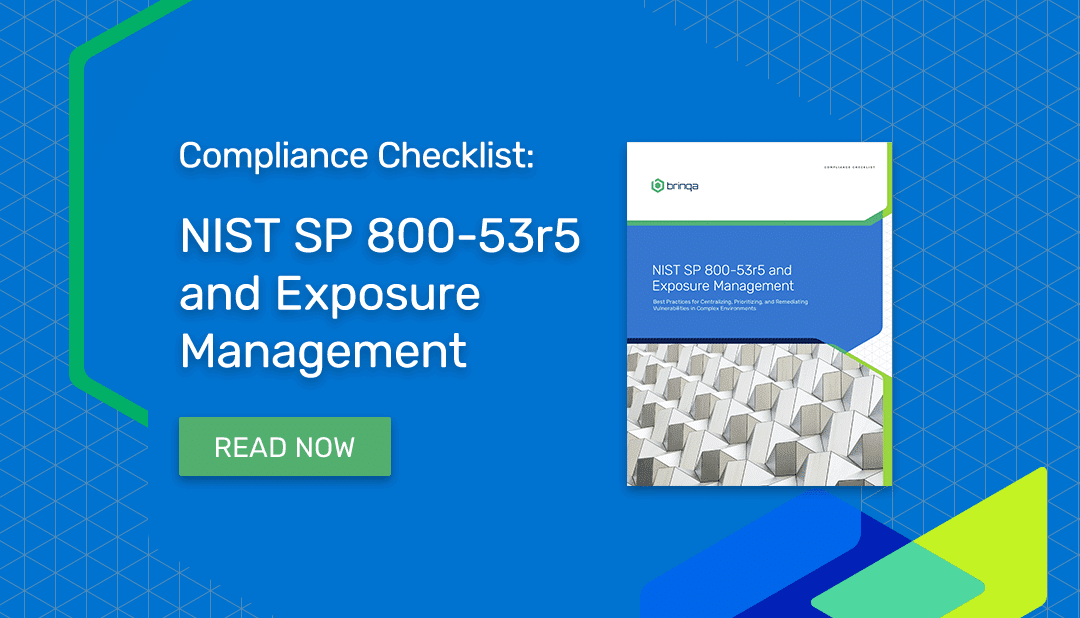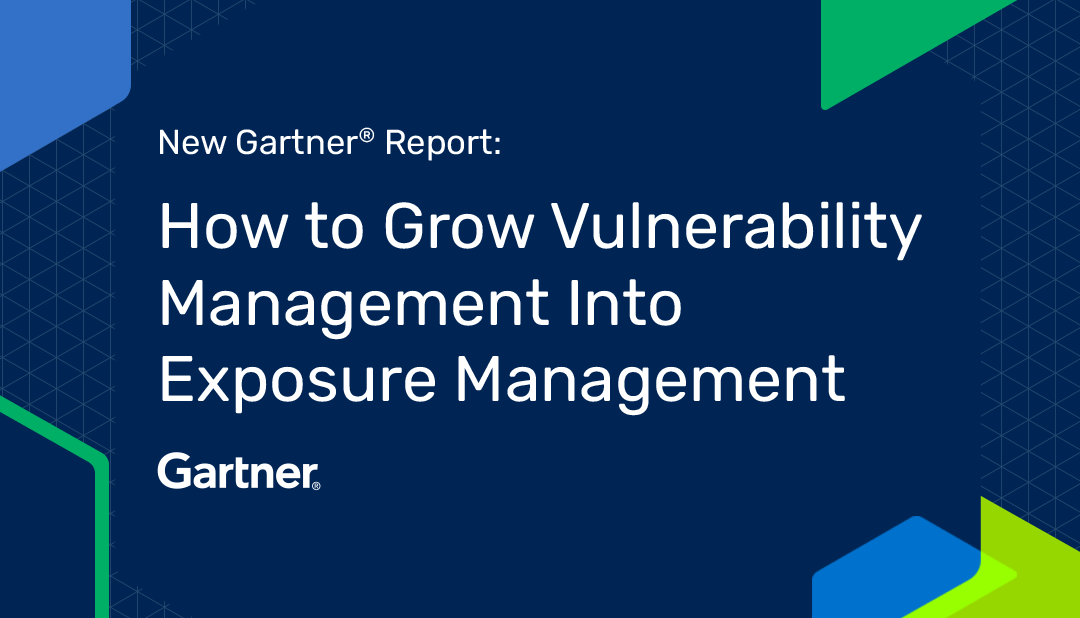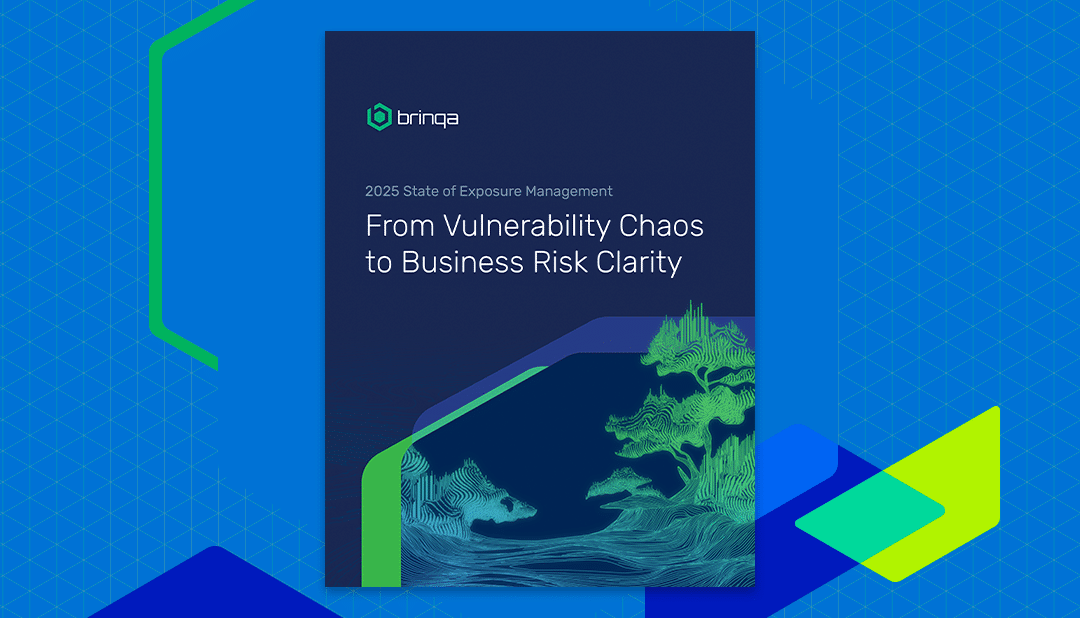
NIST SP 800-53r5 Compliance Guide for Vulnerability Management

Managing Vulnerabilities and Exposures with NIST SP 800-53r5
NIST SP 800-53 Revision 5 (formally titled “Security and Privacy Controls for Information Systems and Organizations“) is a standard published by the U.S. National Institute of Standards and Technology (NIST). It provides a comprehensive catalog of security and privacy controls to help organizations protect their information systems against cybersecurity risks, including unauthorized access, data breaches, and other threats. SP 800-53 is a foundational security and privacy framework that several other NIST publications are built upon.
Although originally created as a guideline for U.S. federal IT systems, Revision 5, released in September 2020, expanded to any organization (public or private) seeking robust cybersecurity practices.
NIST 800-53 offers a structured approach to help organizations proactively identify, assess, prioritize, and remediate vulnerabilities. It also connects vulnerability management to broader enterprise risk management practices, ensuring that vulnerabilities are viewed not just as technical problems, but as part of the organization’s overall risk profile.
This post explores the fundamental NIST 800-53 principles involved in managing vulnerabilities; examines key NIST 800-53 controls; and identifies best practices for simplifying the centralization, prioritization, and remediation of vulnerabilities across complex environments.
How NIST 800-53r5 Relates to Vulnerability and Exposure Management
Managing vulnerabilities (like unpatched software or misconfigured systems) is central to maintaining cybersecurity — and NIST 800-53 directly supports this by:
- Mandating Vulnerability Scanning and Monitoring: Controls RA-3 and RA-5 (Risk Assessment) require organizations to assess and continuously scan for known vulnerabilities and remediate them based on risk. Scans must be performed regularly and after significant system changes.
- Requiring Flaw Remediation: Control SI-2 (Flaw Remediation) ensures that identified software and hardware flaws are promptly corrected, minimizing the window of exposure.
- Supporting Continuous Assessments and Monitoring: Controls CA-2 and CA-5 (Assessment, Authorization, and Monitoring) ensure ongoing observation of systems to detect changes that could introduce new vulnerabilities.
- Ensuring Incident Response: Control IR-6 (Incident Handling) covers how organizations respond to exploitation of vulnerabilities — including reporting.
- Reporting for Audits: Control AU-6 (Audit and Accountability) requires organizations to integrate data sources to enhance the ability to detect activity.
Key NIST 800-53r5 Controls for Vulnerability and Exposure Management
NIST SP 800-53r5 includes several controls that directly support vulnerability and exposure management. These controls guide organizations in assessing risk, managing flaws, monitoring systems, and ensuring that findings are addressed and reported effectively.
While the full framework includes a broad set of requirements, the following highlights a selection of key controls most relevant to vulnerability management. Each control is paired with a practical best practice to help simplify implementation across complex environments.
NOTE: The below information has been edited for brevity and clarity and includes select controls only. For a complete list of NIST controls please review the complete NIST SP 800-53r5 requirements in detail and consult your auditor.
Control: RA-5 – Vulnerability Monitoring
- Focus: Scan for vulnerabilities across systems and applications on a regular basis and whenever new threats emerge.
- Best Practice: Unify and normalize data from multiple scanning tools. Ensure that vulnerability scores are kept up to date in line with changes to the attack surface. Use pre-built integrations where possible to streamline data ingestion and reduce manual effort.
Control: SI-2 – Flaw Remediation
- Focus: Identify, prioritize, and remediate software and hardware flaws quickly to reduce exposure.
- Best Practice: Use a workflow engine that enables rule-based automations for generating tickets, alerts, and exceptions. Support remediation with built-in workflows and bi-directional integrations to platforms like Jira, ServiceNow, GitLab, and Azure DevOps. Enable synchronization of tickets, status updates, and remediation evidence to ensure full visibility and closure. Define conditions to automatically trigger reporting based on status changes (e.g., patched, validated, SLA breached).
Control: AU-6(5) – Audit and Accountability
- Focus: Integrate audit logs with other security and operational data to identify unusual or unauthorized activity.
- Best Practice: Correlate vulnerability, asset, and system data with audit trails to improve detection and analysis. Use customizable dashboards and compliance reports to track control coverage, SLA adherence, and remediation progress. Link audit controls to real-time security findings to drive accountability and continuous improvement.
Control: CA-2(2) – Security Control Assessments
- Focus: Conduct comprehensive assessments that include scanning, testing, and threat simulations.
- Best Practice: Incorporate results from vulnerability scans, insider threat assessments, and automated test cases into control assessments. Aggregate findings from infrastructure, application, and cloud sources into a unified view to support informed risk decisions and remediation planning.
Control: RA-3 – Risk Assessment
- Focus: Evaluate the likelihood and potential impact of cybersecurity threats to systems, data, and individuals.
- Best Practice: Combine threat intelligence and contextual information (e.g., exploitability, business impact, data sensitivity) with standard scoring models like CVSS and EPSS. Normalize and adjust risk scores across all asset types to create a prioritized view of the most critical exposures.
Control: IR-6(2) – Incident Response
- Focus: Ensure that vulnerabilities related to incidents are reported and addressed appropriately.
- Best Practice: Maintain detailed metrics on vulnerabilities tied to security events. Capture trending data, remediation status, and SLA compliance. Feed these insights back into risk and remediation processes to reduce time to detect and respond to future incidents.
Want the complete checklist with all mapped controls and recommendations? Download the full NIST 800-53 and Exposure Management Checklist to strengthen your vulnerability program.
Frequently Asked Questions (FAQ)
What is NIST SP 800-53r5?
NIST SP 800-53r5 is a cybersecurity and privacy framework developed by the National Institute of Standards and Technology (NIST). It provides a comprehensive set of security controls for managing risk and protecting information systems across both public and private sector organizations.
How does NIST 800-53r5 support vulnerability management?
The framework includes several controls that directly address vulnerability management—such as RA-5 for monitoring, SI-2 for flaw remediation, and CA-2 for control assessments. These controls guide organizations in identifying, assessing, and mitigating security weaknesses.
What are best practices for implementing NIST vulnerability controls?
Best practices include centralizing data from multiple scanners, applying contextual risk scoring (e.g., using CVSS and EPSS), automating remediation workflows, and leveraging dashboards for reporting and compliance tracking.
Is there a full compliance checklist available?
Yes. Brinqa provides a comprehensive NIST 800-53 and Exposure Management Checklist that maps relevant controls to actionable best practices. It’s available as a free gated resource.
Can I automate NIST compliance tasks?
Yes. Brinqa automates key elements of NIST compliance, including risk scoring, remediation tracking, SLA monitoring, and compliance reporting. Through pre-built integrations with common security and IT operations tools, Brinqa enables bi-directional data flows that streamline workflows, reduce manual effort, and ensure audit-ready reporting.
How Brinqa Simplifies Vulnerability and Exposure Management
Security teams are increasingly overwhelmed by the effort required to centralize, score, and prioritize vulnerabilities. The constant influx of new threats makes it difficult to keep up, leaving organizations at risk of unaddressed exposures and potential breaches.
For organizations aligned with the NIST SP 800-53r5 standard, Brinqa offers a powerful solution.
The Brinqa Vulnerability and Exposure Management Platform — powered by the unique Cyber Risk Graph™— helps security teams prioritize vulnerabilities with rich business context. It unifies data from multiple sources, enriches it with threat intelligence, and applies contextual scoring to surface the threats that matter most.
What Brinqa Delivers:
- Unmatched Integrations: Connects with over 220 tools across IT, cybersecurity, and business systems to consolidate findings from infrastructure, applications, and cloud. This reduces costs, improves tool ROI, and accelerates time to value.
- Enriched Prioritization: Automatically layers on threat intelligence — such as exploitability, business impact, and risk context — to streamline prioritization and drive faster mitigation.
- Remediation Orchestration: Automates ticketing, grouping, ownership assignment, and SLA tracking, enabling teams to focus on reducing real risk — not just working through checklists.
- Custom Dashboards and Reports: Gives stakeholders tailored views of risk, delivering greater clarity and decision-making power than generic, out-of-the-box reports.
- Scalable, Expert-Driven Deployments: Brinqa delivers tailored solutions built around your environment and risk posture — going far beyond the limitations of quick, cookie-cutter deployments.
For organizations seeking to align NIST best practices with automated, risk-driven vulnerability management, Brinqa offers a scalable and intelligent approach.
Download the full NIST 800-53 and Exposure Management checklist or request a demo today to see how Brinqa can help your team automate and mature the cyber risk lifecycle.




